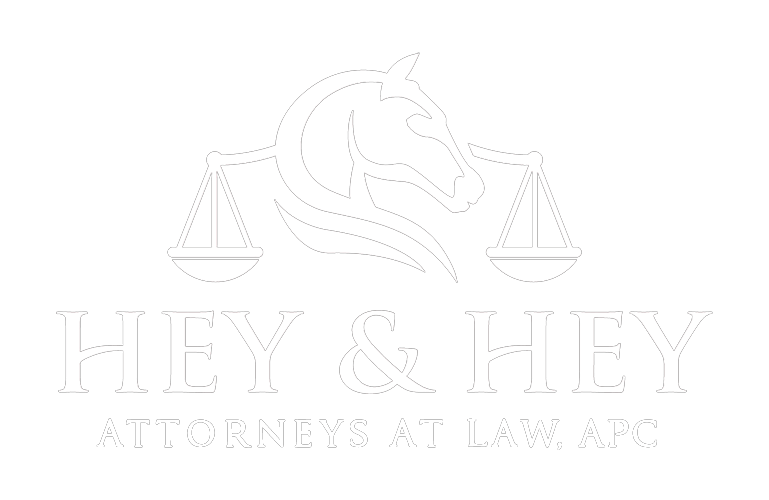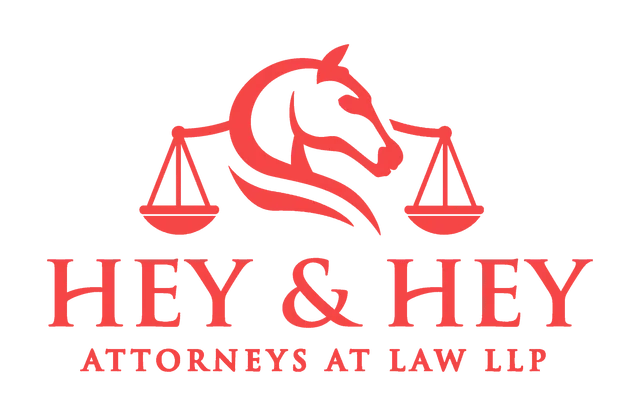Unique 2-Part Equine Business Audit™

An Important Yet Low-Cost Solution That Protects You and Your Business
Hey & Hey Can Help
When you buy a new car, everything works properly. However, after you’ve driven the car 3,000 miles, you have to get the oil changed. And after 30,000 miles you need to have a full maintenance check. If you don’t maintain your car, the battery could go dead, the engine may burn up, or your transmission could fail — leaving you stranded on the side of the road.
We recommend that you maintain your equine business and protect yourself from liability in the same way you take care of your car. Here’s why: When your documents are drafted, they are current and comply with the law. But as laws and situations change, your documents may become out of date. That’s why we recommend that you ask an equine attorney to review your business documents every year.
At Hey and Hey, we offer our Unique 2-Part Equine Business Audit™ to protect you and your business. When you hire us to perform an Equine Business Audit, we …
Review your liability documents including releases/waivers and boarding contracts — and suggest what needs to be done to protect your business and personal assets. Having solid, legal liability documents is the easiest way to reduce your chances of ending up in court. Poorly drafted documents can have exactly the opposite effect!
Review your insurance and advise whether you have enough insurance and the right type(s) of insurance. The lawyers from the insurance company might defend you in court, but, if you have the wrong insurance, you have no protection and no legal defense.
Review your operating rules for your barn — and suggest changes, if needed. Everyone wants to be safe, but a second set of eyes can spot things you didn’t notice. Unsafe conditions almost always result in direct liability,
which means you or your insurance carrier pays.
Review any form documents you use to make sure they comply with California law. The law changes every year. This is especially true with liability waivers, which can be used against you at trial if they are not valid.
Review the training contracts you use with your clients — and tell you whether they provide enough liability protection and what, if anything, needs to be done. If you have a number of clients, sooner or later one will be unhappy no matter how much you try to please them. And, sadly, some people have enough money to sue you — and will sue you — just to make your life miserable.
What value would you place on a service that could save you from a $50,000 lawsuit? If we were a big city law firm, we would charge you $2000 to $4000 for this review to cover our sky-high overhead. But, fortunately, we don’t work for a big city firm so our fees are substantially less.
Part One
During Part 1, we review all of the documents listed above — suggest specific ways they can be improved — and explain whether we can correct your existing documents, or whether we should draft new documents. We do all this in Part 1 of our Equine Business Audit, for a flat fee that starts at $1550 depending on how many documents need to be reviewed.
Next, we estimate our fees for correcting your current documents or writing new ones. These fees are based on the amount of time needed to update your written materials. We bill only for the actual time we work, which we guarantee will not exceed our fee estimate. This way you’ll know the maximum amount we will bill, and if we finish sooner, you’ll pay less. If you give us the go-ahead, we move on to Part 2.

Part Two
During Part 2, we correct your current documents or write new ones, making sure they protect you and your business, and making sure they comply with California law. Then we go over each document with you so you know what we’ve done — and know how and when to use these documents in your business.
After we complete both parts of our unique, 2-part Equine Business Audit, you’ll enjoy peace of mind and sleep better at night. You’ll know that your business is on sound legal footing. Plus you’ll know that both you and your business are well protected from liability and lawsuits. So contact us today, won’t you?


